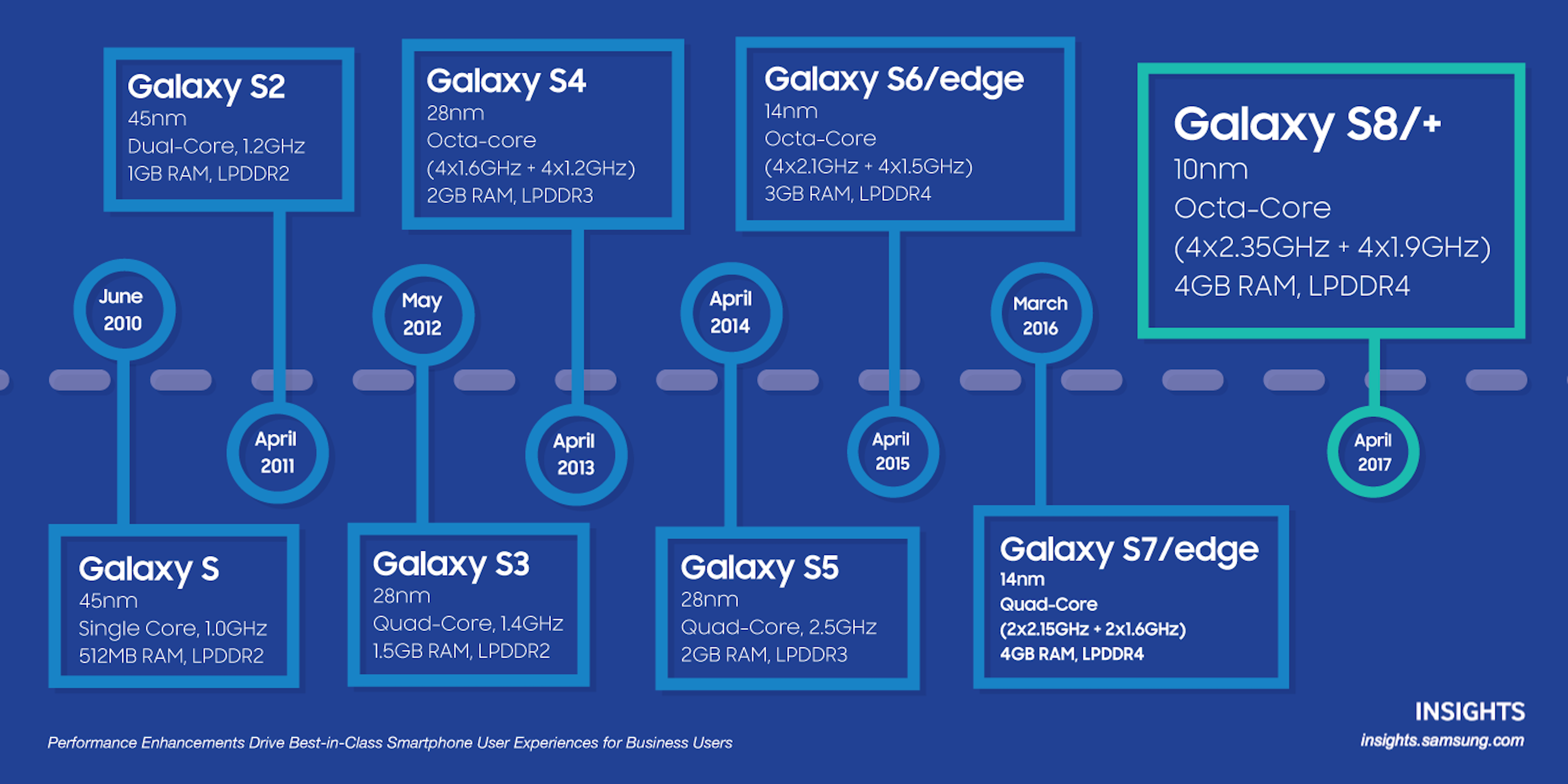Since the introduction of smartphones nearly a decade ago, generational improvements to core components have driven increased performance and energy efficiency and brought significant enhancements to the user experience enjoyed today by both business users and consumers. These improvements include advances in manufacturing technology, system architecture and overall design.
One of the key performance drivers is the smartphone application processor (AP), a System-on-Chip (SoC) designed to support applications running on the operating system of the smartphone. Smartphone processors deliver all system capabilities needed to support a device’s applications, including memory management, graphics and multimedia processing.
The semiconductor manufacturing process technology (typically referenced in “nanometers” or “nm”) of the AP has continued to evolve, enabling a higher density of integrated circuits on a single die or chip. The rate of this evolution has historically been characterized by Moore’s law, which states that the number of transistors in an integrated circuit doubles approximately every two years. The benefits of advanced process technology include higher performance, lower active power consumption and reduced die size, enabling smaller form factor smartphones. For example, the Galaxy S8 and S8+ smartphones are based on the world’s first 10nm AP, which delivers considerable process technology enhancements over the 45nm smartphone processors featured in the original Galaxy S from 2010.

In addition to process technology improvements, the core count and frequency of smartphone processors have increased. The shift from single-core to multi-core APs (such as dual-core, quad-core and most recently octa-core) has enabled improved performance and energy efficiency. One of the primary benefits of multi-core APs is that they deliver lower power consumption, as workloads are distributed across multiple cores. Due to this workload sharing, each core can run at a lower frequency and voltage, thereby consuming significantly lower power and offering much higher performance per watt as compared to single core implementations. This energy efficiency can translate to longer battery life and the ability to seamlessly run more applications simultaneously. In addition to core count, core frequencies have steadily increased. From the Galaxy S running a single core at 1.0GHz, to the Galaxy S8 running octa-core at up to 2.35GHz, we’ve seen massive enhancements. Increases in peak core frequency provide high burst performance for the most demanding workloads when needed.
What Is the Ideal Smartphone Screen Size?
Finding a phone with the right screen size can help you balance productivity and usability. Download Now
A Breakthrough in User Experience
Memory architecture, type and speed have also steadily increased over the past seven years, enabling lower power and higher performance, as measured by faster reading and writing of data, and execution of processor instructions. Over this period, memory performance has evolved, as measured by an 8x increase in DDR I/O bus clock frequency from 200MHz (LPDDR2) up to 1600MHz (LPDDR4). LPDDR stands for “Low Power Double Data Rate” memory, a form of memory which operates at a lower voltage designed for usage in mobile devices such as smartphones and tablets.
In addition, graphics processors and media subsystems including display, camera and video processors have also seen marked improvements, which have enabled the rich multimedia user experience found on today’s smartphones.
The performance improvements and responsive design of more recent smartphones have enabled breakthrough user experiences including:
- Rapid and smooth user interface transitions for seamless device interactions
- Quick launch and running of applications and services
- Multitasking and running of multiple applications without performance degradation
- Fast web browsing and page rendering
- Rich multimedia communications, including crystal-clear video calling
The introduction of the new Galaxy S8 and S8+ has allowed significant leaps in performance with the world’s first 10nm octa-core AP (2.35GHz with 4x cores, 1.9GHz with 4x cores). Galaxy S8 and S8+ smartphones employ 4GB of high-performance LPDDR4 memory to support the most demanding business applications. The leading-edge graphics and media processors provide accelerated performance for the 2960 x 1440 pixel QHD+ Super AMOLED Infinity Display and unparalleled, immersive video and audio experiences. These best-in-class performance capabilities, among others, are the reason that Galaxy S8 and S8+ smartphones have a responsive design that enables heightened productivity, reliability and user experiences in both work and personal life.
Learn more about how processor performance can boost speed, efficiency and memory in mobile computing devices.








